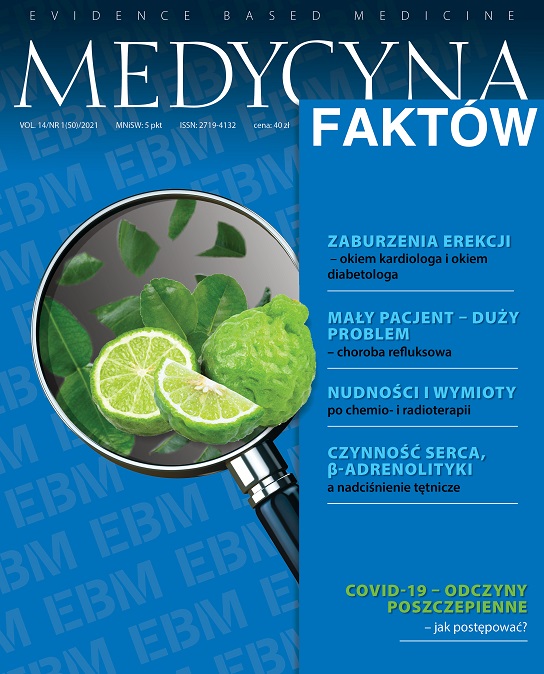Azithromycin – application in the era of telemedicine Review article
Main Article Content
Abstract
The pandemic has forced the limitation of direct contact between doctors and patients. Telemedical visit appeared in doctor’s offices and became an indispensable form of medical procedure. This form of patient communication can change current models of medical care. Providing health services with the use of teleinformatic communication (e.g. telephone, internet) allows for the assessment of the patient’s health condition, diagnosis and treatment implementation. The assessment of photos taken by the patient may significantly bring the diagnostician closer to the correct diagnosis and be necessary for the implementation of effective treatment. However, when conducting a telemedical visit, the physician should exercise due diligence, conduct a thorough interview, describe the patient’s health condition and the resulting therapeutic decisions in the documentation, and describe the treatment method used.
During telemedicine treatment of infections, we can use macrolides, including azithromycin. Over the many years of use, its good effectiveness, low bacterial resistance and an excellent safety profile have been confirmed. The clinical scenarios in which we can use azithromycin during the telemedical visit are patients with pharyngitis and allergic to β-lactam antibiotics, with documented pertussis (the whooping cough), and for the prophylaxis of traveler’s diarrhea. However, let’s remember about the limitations and pitfalls that may occur during the telemedical visit.
Article Details
Copyright © by Medical Education. All rights reserved.
References
2. Ustawa z 5 grudnia 1996 r. o zawodach lekarza i lekarza dentysty (t.j. Dz.U. 2020 r. poz. 5014, 567).
3. Rekomendacje ogólne dotyczące teleporad, m.in. dla onkologów, pediatrów. Niezależny Zespół Ekspertów Continue Curatio (access: 29.12.2020).
4. Makowska M, Sybilski AJ. Czy mamy skuteczny lek w bakteryjnych infekcjach górnych dróg oddechowych o mnogiej lokalizacji? Pediatr Med Rodz. 2014; 10(2): 128-36.
5. Filczak K, Sybilski AJ. Azytromycyna w leczeniu zapalenia gardła i migdałków. Spojrzenie bakteriologa oraz klinicysty. Pediatr Med Rodz. 2013; 9(1): 50-6.
6. Ikemoto K, Kobayashi S, Haranosono Y et al. Contribution of anti-inflammatory and anti-virulence effects of azithromycin in the treatment of experimental Staphylococcus aureus keratitis. BMC Ophthalmol. 2020; 20(1): 89.
7. Cramer CL, Patterson A, Alchakaki A et al. Immunomodulatory indications of azithromycin in respiratory disease: a concise review for the clinician. Postgrad Med. 2017; 129(5): 493-9.
8. Hansen MP, Scott AM, McCullough A et al. Adverse events in people taking macrolide antibiotics versus placebo for any indication. Cochrane Database Syst Rev. 2019; 1(1): CD011825.
9. Zeng L, Xu P, Choonara I et al. Safety of azithromycin in pediatrics: a systematic review and meta-analysis. Eur J Clin Pharmacol. 2020; 76(12): 1709-21.
10. Sybilski AJ. Azytromycyna – antybiotyk i nie tylko. Pediatr Med Rodz. 2020; 16(3): 261-7.
11. Iqbal J, Dehraj IF, Carey ME et al. A Race against Time: Reduced Azithromycin Susceptibility in Salmonella enterica Serovar Typhi in Pakistan. mSphere. 2020; 5(4): e00215-20.

